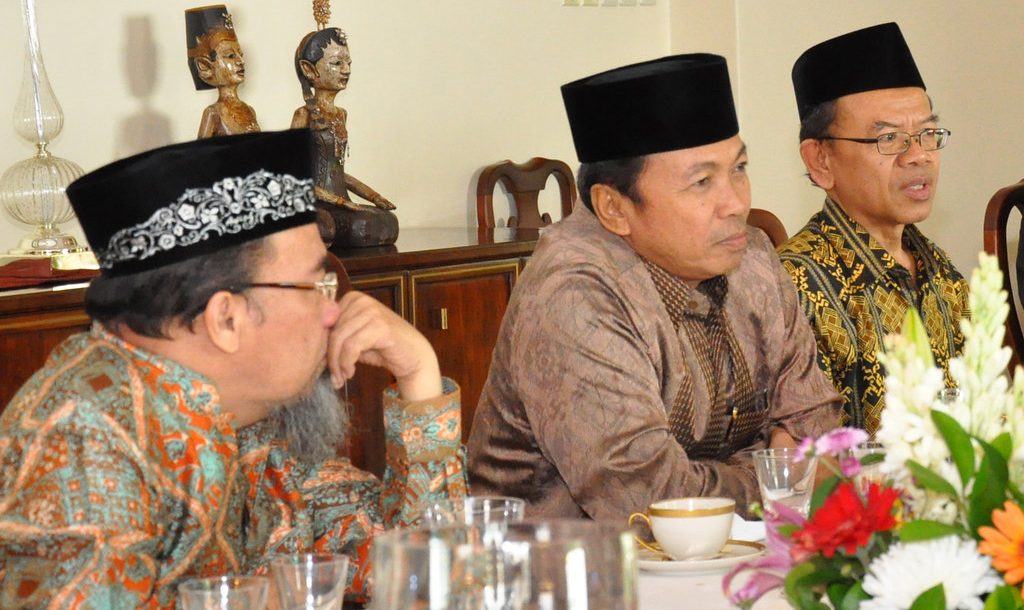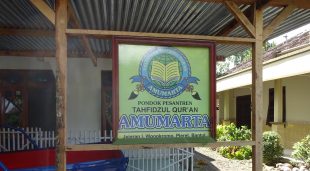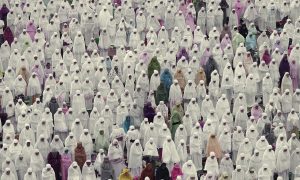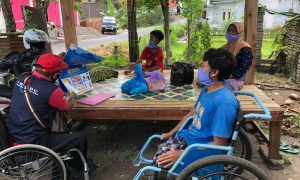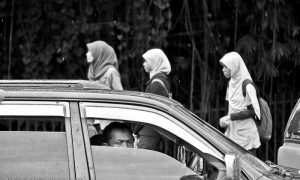The publication of the article entitled “The Myth of Pluralism: Nahdlatul Ulama and the Politics of Religious Tolerance in Indonesia” in the Contemporary Southeast Asia journal has drawn attention from many Nahdlatul Ulama (NU) circles. The article provoked responses from several NU activists and elites, including critical articles from Amin Mudzakkir (Indonesian Institute of Sciences researcher), Ima Sri Rahmani (Lecturer at UIN Syarif Hidayatullah Jakarta), and Ridwan al-Makassary (Lecturer at Universitas Sains dan Teknologi Jayapura, Papua and Co-Founder of Indonesia Peace Institute). In addition, a number of webinars have been hosted by various groups discussing and examining the article.
These debates raised several main objections to Mietzner and Burhanuddin’s article, such as that their conclusions were too hasty, or that they did not comprehend NU’s political history from its context. Mietzner and Burhanuddin were also regarded as having failed to recognise NU’s involvement in spreading tolerance or pluralism in Indonesia.
In addition, Mietzner and Burhanuddin were considered to have demoralized NU followers/activists who have been taking part in religious tolerance efforts so far. Finally, they were also considered to have failed to reveal NU’s behaviour as an organization, and only examined the perceptions of “followers” rather than “members” of NU.
To avoid further negations, this essay will address the main points of Mietzner and Burhanuddin’s criticisms. According to the authors, disharmony has existed between the narration from NU’s elite and its articulation at the grassroots level.
Mietzner and Burhanuddin refuted claims made by Mirjam Kȕnkler and Alfred Stepan in an article entitled “Indonesian Democratization in Theoretical Perspective”. Kȕnkler and Stepan claim that NU’s democratic values ”were well disseminated among their followers and even reached the wider community”. Mietzner and Burhanuddin argued that this claim is questionable in light of religious intolerance among NU supporters.
Mietzner and Burhanuddin’s surveys indicated that massive activities held by the NU elite in the 2019 general election campaign significantly reduced support for Islamist hardliners, without the measurable impact on intolerant attitudes among NU supporters. As a result, NU supporters were generally intolerant to other Muslim groups.
Furthermore, Mietzner and Burhanuddin also mentioned that NU’s work and campaigns on pluralism issues and opposition to hard-line Islamic groups should be understood as a campaign to eliminate religious competitors that could threaten NU’s dominance.
As a result, NU provided few tangible benefits to the consolidation and enhancement of pluralist values in Indonesia. Obviously, this conclusion triggered internal tension and dissatisfaction in some NU circles, especially among the elite and activists.
I point to the deficits in Mietzner and Burhanuddin’s article in capturing the depth of the object under study, including the dynamics of NU followers. This point has indeed been much explored by previous writers, however, I will address several less-well elaborated points. The narrative of pluralism is commonly understood by the NU community as one of the NU’s agendas at least since Abdurrahman Wahid’s (also known as Gus Dur) leadership from 1984 to 1999. Since then various agendas, campaigns, and activities related to pluralism have been popular within NU. Mietzner and Burhanuddin’s article fails merely due to its limited division of NU groups into only two entities, the elite and the grassroots. This indicates insufficient observation by Mietzner and Burhanuddin.
Among other things, the activities and work of youth groups and NU’s wing organisations on the issue of pluralism are excluded from the discussion in Mietzner and Burhanuddin’s article. In fact, the pluralism campaign and other civil society issues of concern to the NU community were mostly fronted and interspersed by the youth groups and NU’s wing organizations, such as the Indonesian Muslim Students Movement (PMII)and the paramilitary youth wing Banser.
Furthermore, Mietzner and Burhanuddin’s article failed to acknowledge external institutions which reside predominantly within NU, including the Wahid Institute, Jaringan GUSDURian / GUSDURian Network and Front Nahdliyyin untuk Kedaulatan Sumber Daya Alam (FNKSDA)/ Nahdliyyin Front for Sovereign Natural Resources, existing across numerous regions in Indonesia and engaged in campaigning on civil society issues (pluralism, eviction or land annexation).
Obviously, NU’s campaign on civil society issues such as tolerance and pluralism are not actually solely owned by the NU elite, but also provide roles for external organizations, grassroots bases and NU youth groups. Their roles were significant in enhancing civil society issues in Indonesian society. Unfortunately, they were excluded from Mietzner and Burhanuddin’s survey.
As a result, Mietzner and Burhanuddin’s conclusions are different from what many Indonesians believe in regards to NU’s tolerant and pluralist attitudes, especially when considering the NU’s campaigns for pluralism since the era of Abdurrahman Wahid’s leadership. Unfortunately, Mietzner and Burhanuddin’s article merely pointed out the work and activity of NU in addressing pluralism.
Even though NU has a long list of works and campaigns on pluralism and other civil society issues, Mietzner and Burhanuddin concluded that the awareness of such issues at all levels often reach a dead-end in NU circles. At this point, I agree with Mietzner and Burhanuddin that pluralism has been insufficiently accepted among NU circles, both in the grassroots and elite level.
However in my view of the dynamics within NU itself, I note they often respond to a variety of new issues, such as democracy or pluralism, and invite debate. Specific examples include the rejection of hermeneutics and liberal Islamic groups at the 2004 NU Congress.
The rejection of hermeneutics and the Liberal Islam Network group in the congress was considered a sign of a gap between the youth and older Ulama. Indeed, Ahmad Baso, the author of NU Studies, criticises this view by highlighting different interpretations within NU circles.
‘Green Islam’: Islamic environmentalism in Indonesia
Indonesia promises a future of Quran-inspired sustainability and renewables but is constrained by fossil fuel interests in government.
In this context, the meaning of pluralism in NU cannot possibly have a single and monolithic meaning. Therefore, most NU grassroots organisations reject the NU elite’s idea of pluralism as mere imagination. Moreover, groups claiming to be NU Garis Lurus (NUGL), or “True Path NU”, such as the clerics like Luthfi Basori, Idrus Ramli and Buya Yahya, propagate principles that oppose central NU guidance on issues of pluralism, non-Muslim leaders or the existence of Shia groups.
I believe that the lack of of pluralist values at the grassroots level, as demonstrated by opposition to the establishment of non-Islamic houses of worship, is mostly due their position as majority populations in homogenous Muslim communities). However, that does not mean that grassroots’ ignorance or indifference to tolerance is inevitable. Again, the path taken by NU circles in addressing pluralism, whether at an elite or grassroots level, faces numerous obstacles, including the the rejection of the NU elite campaign itself. However, I believe that the NU’s campaign for pluralism has been successful, because pluralist movements have started to grow, both within the NU and in grassroots organisations.
 Facebook
Facebook  Twitter
Twitter  Soundcloud
Soundcloud  Youtube
Youtube  Rss
Rss 